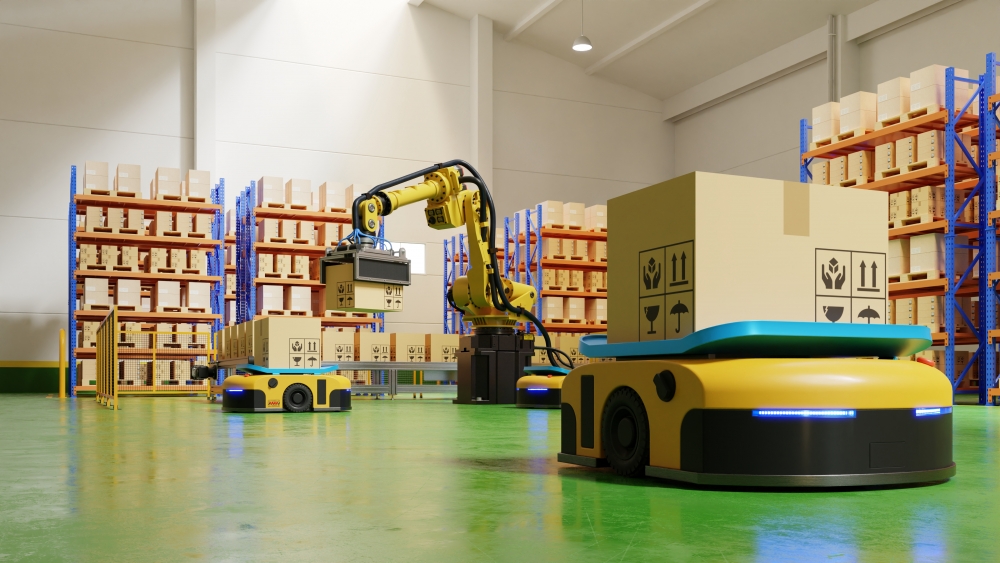
Age of Automation

From iron age water mills to artificial intelligence, few innovations have had as great an impact on society as the progression of automation. It has boosted humanity’s abilities, efficiency and standard of life since prehistory.
But any hapless seamstress or tailor in the early 19th century would likely point out the downsides of automation. While a power loom may have revolutionized clothing production, it put thousands of people out of a job, as just a few technicians can replace a room full of skilled workers.
Clearly, automation has winners and losers.
How can new technology be implemented in a way that maximizes its benefits and mitigates its drawbacks? Much time and money are invested in false starts before a new paradigm emerges. “Getting it right that first time takes a lot more time, a lot more money and a lot more failure than anyone would hope,” said Matt Beane, an assistant professor in UC Santa Barbara’s graduate Technology Management Program. “And most organizations don’t meet with success.”
Employees and administrators alike would surely welcome research that sheds light on these two aspects of automation. This is precisely the goal Beane has in mind for an ambitious research program investigating the integration of artificial intelligence in the warehouse and packaging industry. Beane and his colleague Erik Brynjolfsson at Stanford University are collaborating with industry leaders and, soon, the U.S. Census Bureau to look at automation from the perspective of both workers and industry to uncover the secrets that lead to the rare, early positive outcomes that previous research has missed.
On Feb. 2, Beane and Brynjolfsson will host a National Science Foundation-funded workshop titled “Adapting to AI-enabled Automation.” They plan to share their current findings with other experts in the field as well as solicit their interest in writing a grant proposal for the Future of Work at the Human-Technology Frontier, one of the NSF’s 10 Big Ideas. They hope to develop a technology that could address some of the challenges and opportunities that have become evident in their data.
“We are honored and excited to have some incredible minds from diverse backgrounds joining us,” Beane said. “Many of them also command extensive resources — organizations, technologies, experts and so on — that could be mobilized to support our effort.”
“We are positioned to write a compelling proposal that — if accepted and implemented — could genuinely improve the ability of workers and organizations to adapt constructively to this new wave of learning automation,” he continued. “We're excited to isolate and more carefully study those workers and organizations that have defied the odds.”

Automation redefines the roles that humans fill in large operations.
A few trends have become clear over several decades of research on automation in industry. “We have between 60 and a hundred years of research on automation,” said Beane. “All of that research basically shows that, whenever you introduce a new kind of automation, it takes a lot longer than anybody would hope to figure out how to get significant value from it. And in particular we see that frontline workers struggle to adapt, and many get the short end of the stick.” The challenge is that winning strategies – whether new techniques, technologies, policies or societal norms — become clear only with decades of hindsight.
Nearly two years ago, Beane and Brynjolfsson were approached by the CEO of a startup working to commercialize AI-enabled robots in repetitive, manual work in warehouses. He was curious if their expertise could help his company assess the impact of their technology on workers. If it was negative, he told them that he and his colleagues wanted to know soon so they could lobby for legislation to protect workers.
“So I told him, ‘look, we could study just you, but guess what? We're just going to show a lot of failure, despair. That’s what happens,’” Beane recalled. “‘If, however, we could enroll four companies like you and get all of you to donate deployment sites, we might find the positive needles in the negative haystack.’”
It was an intriguing proposal, even though the company might be aiding its competition. The CEO decided to broach the topic with the leaders of several other firms in the industry. So far, eight companies commercializing AI-enabled robotics in pick-and-pack enterprises have partnered with Beane under a non-disclosure agreement, offering the researchers detailed access to their – and their customers’ – operations.
Revolutionizing an entire field of human endeavor is a tall order, so Beane and Brynjolfsson split the project into three phases. They’re currently in the first phase, which involves a comparative, team-based field study of AI-enabled robotics deployments across a sample of worksites over time. The goal here is to build new theory that helps them predict when and how workers and organizations react constructively to new forms of automation.
Beane outlined two driving questions behind this stage of the project: Under what conditions do organizations adapt particularly well to this new form of automation? And under what conditions do frontline workers adapt particularly well to this new form of automation? Beane put together a team of two project scientists and two doctoral students to collect the massive amount of data needed to answer these questions — including hundreds of interviews, quantitative productivity data, and notes from dozens of multi-day site visits.
Once they have some provisional answers, Beane and Brynjolfsson will begin testing these more robustly in phase two. To accomplish this, they plan to harness the U.S. Census to survey hundreds of thousands of businesses in the country. Most people are familiar with the population census, the most recent of which wrapped up in late 2020. “But most of what the census does is not surveys of individual citizens,” Beane said. “It's surveys of organizations, businesses. For instance, the Manufacturing and Organizational Process survey goes out to 50 or 60,000 businesses around the U.S. every two years. Thanks to Erik’s persistence, we have access to this data.”
This offers Beane and Brynjolfsson access to a much more comprehensive account of business practices and outcomes that they need to validate their hypotheses. That said, getting their questions included on the MOPS, or any other census survey, will require a large investment of time, energy and money, which is precisely why the researchers want to ensure the first phase of the project yields robust and interesting hypotheses.
With a bit of good fortune and enough funding, the researchers hope to verify the results from the census survey with a randomized controlled trial in the program’s third phase. Beane and Brynjolfsson will have to create a persuasive pitch if they hope to convince their partners to participate in an experiment that could affect companies’ bottom lines.
“There has to be real potential business value in participating,” Beane said. A well-designed experiment could entice the companies both with a 50-50 shot at improved results and guaranteed access to early findings that could improve their organization, worker wellbeing and profitability regardless.
Small enterprises generally don’t have the flexibility or incentives to experiment with emerging technologies. Meanwhile, large operations are constantly trying to innovate, but simultaneous experiments can muddy the waters, and often the baby is thrown out with the bathwater. Beane hopes this project can shed light on the practices that truly have the greatest positive impacts.
In a time of rising inequality, decreasing innovation and limited productivity growth, Beane hopes the insights derived through this research program will help forge a better future. “In our quest for productivity, we have often handled automation in ways that actually limit productivity gains while disenfranchising entry-level workers,” he said. “We can do better. We can and should try to handle automation in ways that enhance workers' prospects and organizational productivity at the same time.”
If Beane is right, the good news is that someone out there — some worker, some manager, some technologist — has already figured parts of this out. He, Brynjolfsson and their teams just have to find them, study them, then scale their successes.



